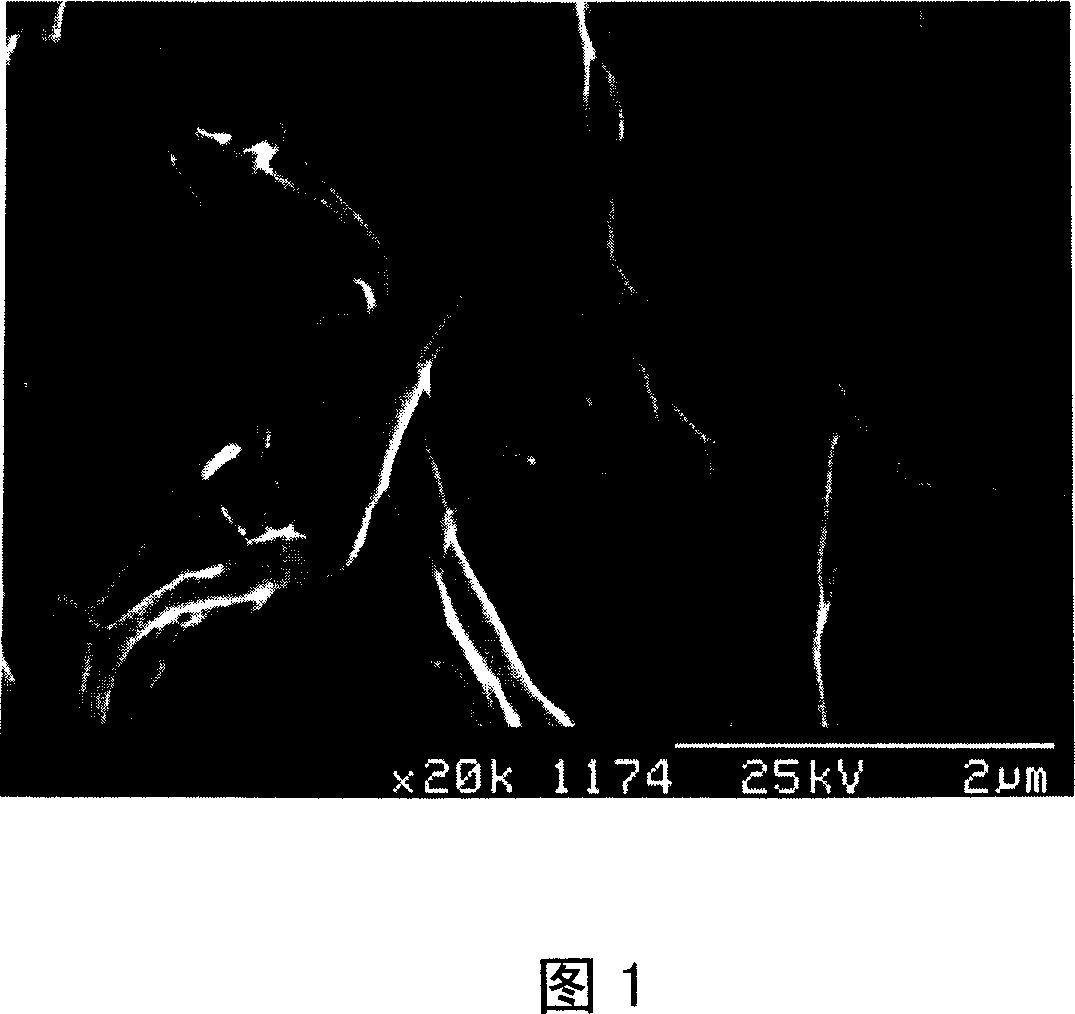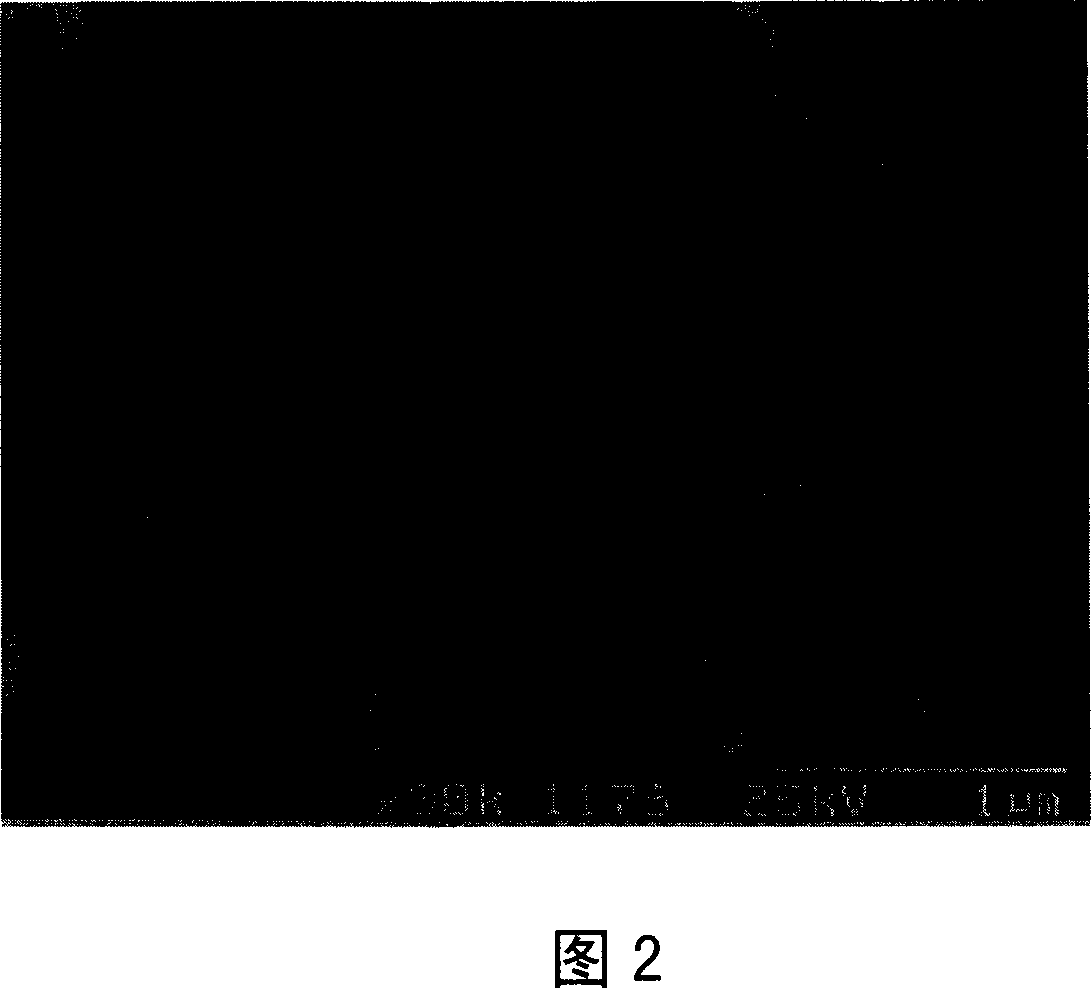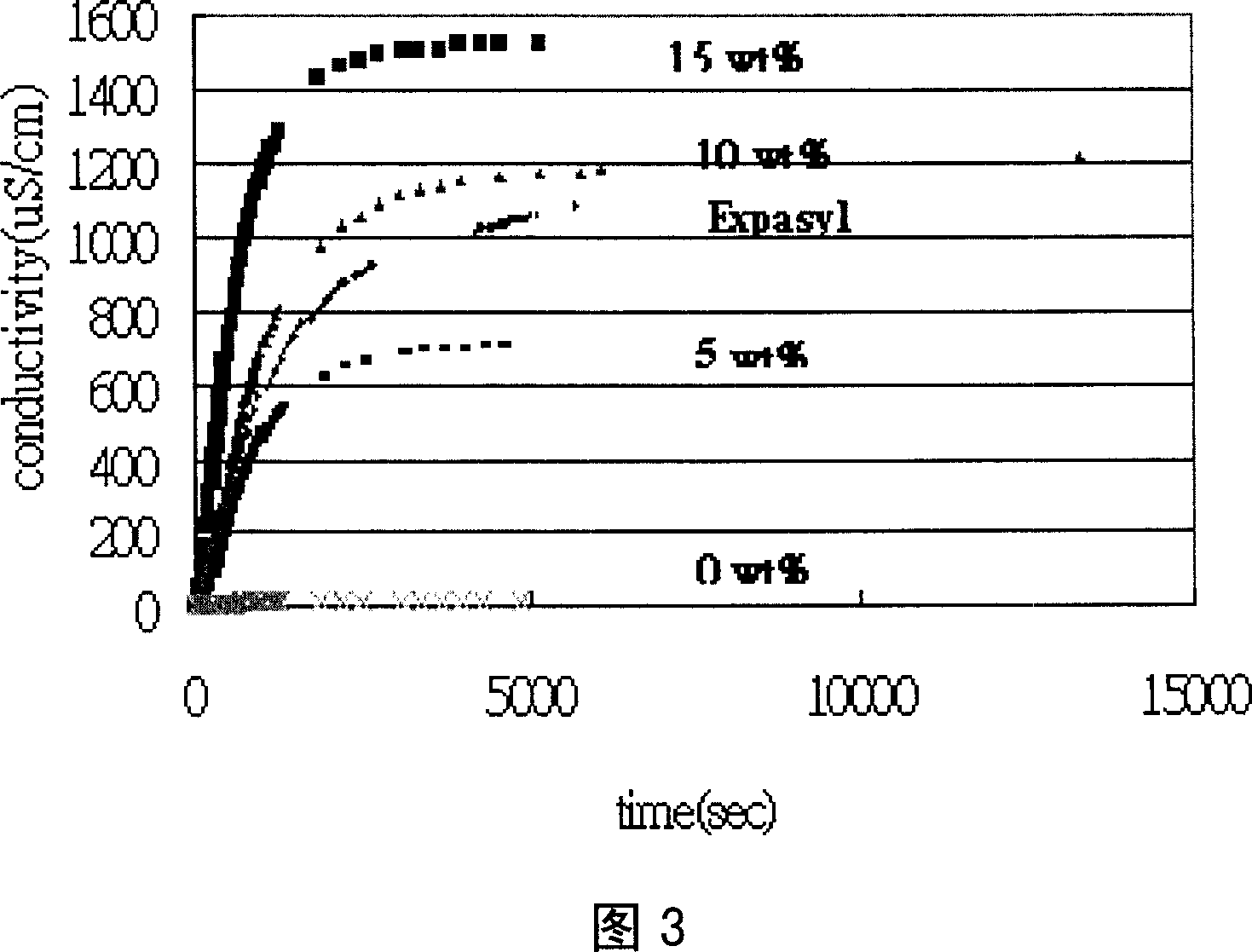Gum removing material
A pigmented, injectable technology for dental preparations, dental prostheses, sustainable waste disposal, etc., which can solve problems such as rapid pulse, harm to patient's gum tissue, and gum injury
- Summary
- Abstract
- Description
- Claims
- Application Information
AI Technical Summary
Problems solved by technology
Method used
Image
Examples
Embodiment 1
[0016] The preparation method of broom fiber is to wind the cellulose fiber with a fineness of 2 deniers (which is defined as the number of grams of fiber weight in 9,000 meters) into a bundle of 1,000,000 deniers and a length of about 1 meter. The fiber machine is cut into 6 mm fiber cut strands, which are mechanically microfibrillated by a disc grinder, so that the fiber presents a multi-layered split-fiber structure, with a long sheet (ribbon), microfibrillation in appearance. Fibrils, barbs, or entangled mixtures of the above shapes, and its structural feature is that the L / D axial ratio (the ratio of length to diameter) is greater than 10, and the typical shape of broom fibers is shown in Figure 1 As shown, the fineness of the broomed fiber is measured according to the test specification of TAPPI T-227, and the Canadian Standard Freeness (CSF) is measured, and the CSF value of the broomed fiber is 102ml.
[0017] When preparing the sample, mix 0.2 grams of aluminum trichl...
Embodiment 2-10
[0022] The preparation of the gingival retraction material is based on the steps and methods of Example 1, the respective content weight percentages of aluminum trichloride astringent, buffed fiber, sodium carbonate flavoring agent, kaolin filler, and water in the components, Change as shown in Table 1. The viscosity test method of the gingival retraction material is also the same as that of Example 1, and the viscosity values of different formulations are summarized in Table 1.
[0023] Based on the simple mechanical method in the early stage, the gingival retraction cord without drugs was directly operated. Although the chemical-mechanical method was proposed in the U.S. Pat. 5,362,495 patent recently, the viscosity was 13×10 6 -30×10 6 cP range, and the wireless gingival retraction technology development of the paste containing 3.6-6.8wt% aluminum chloride astringent, however, the addition of chemical agents can improve the effect of gingival retraction, but it cannot co...
Embodiment 11-12
[0033] The preparation of the gingival retraction material is based on the steps and methods of Example 1, and the respective content weight percentages of the chemical fiber, sodium carbonate flavoring agent, kaolin filler, and water in the components are prepared according to the composition of Table 2. The viscosity test method of the gingival retraction material is also the same as that of Example 1. The evaluation of the effect of the gingival retraction material is carried out with reference to the animal test steps of Comparative Example 1. The viscosity values of different formulations, the gingival retraction effect of the gingival retraction material, and gingival recession The evaluation results of the animal experiments are summarized in Table 2.
[0034] The results show that in Examples 11 and 12, the width of the gingival sulcus before and after use is greater than 0.5mm, showing a high-viscosity gingival retraction material (31.0×10 6 with 54.0×10 6 cP) can ...
PUM
 Login to View More
Login to View More Abstract
Description
Claims
Application Information
 Login to View More
Login to View More - R&D
- Intellectual Property
- Life Sciences
- Materials
- Tech Scout
- Unparalleled Data Quality
- Higher Quality Content
- 60% Fewer Hallucinations
Browse by: Latest US Patents, China's latest patents, Technical Efficacy Thesaurus, Application Domain, Technology Topic, Popular Technical Reports.
© 2025 PatSnap. All rights reserved.Legal|Privacy policy|Modern Slavery Act Transparency Statement|Sitemap|About US| Contact US: help@patsnap.com



